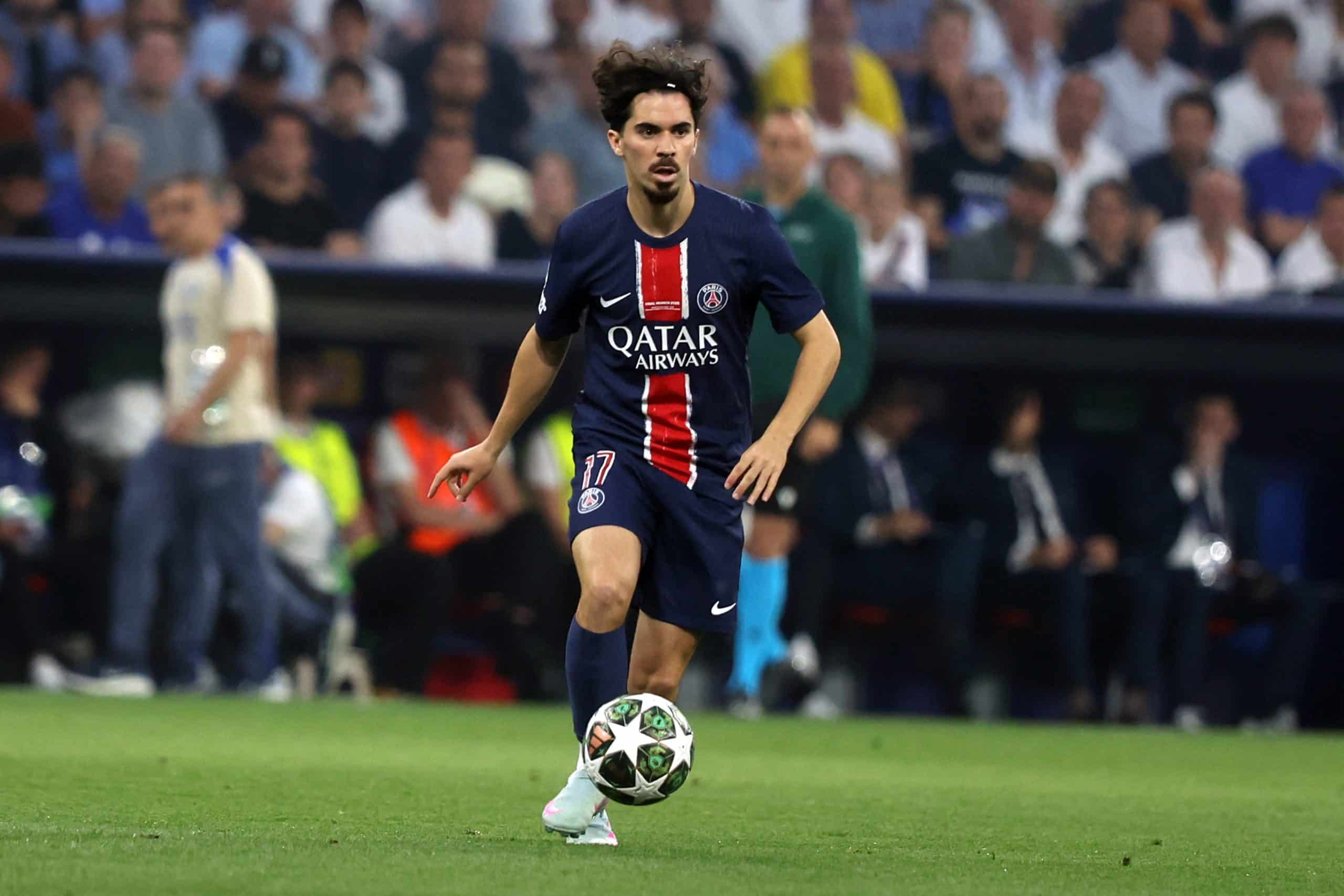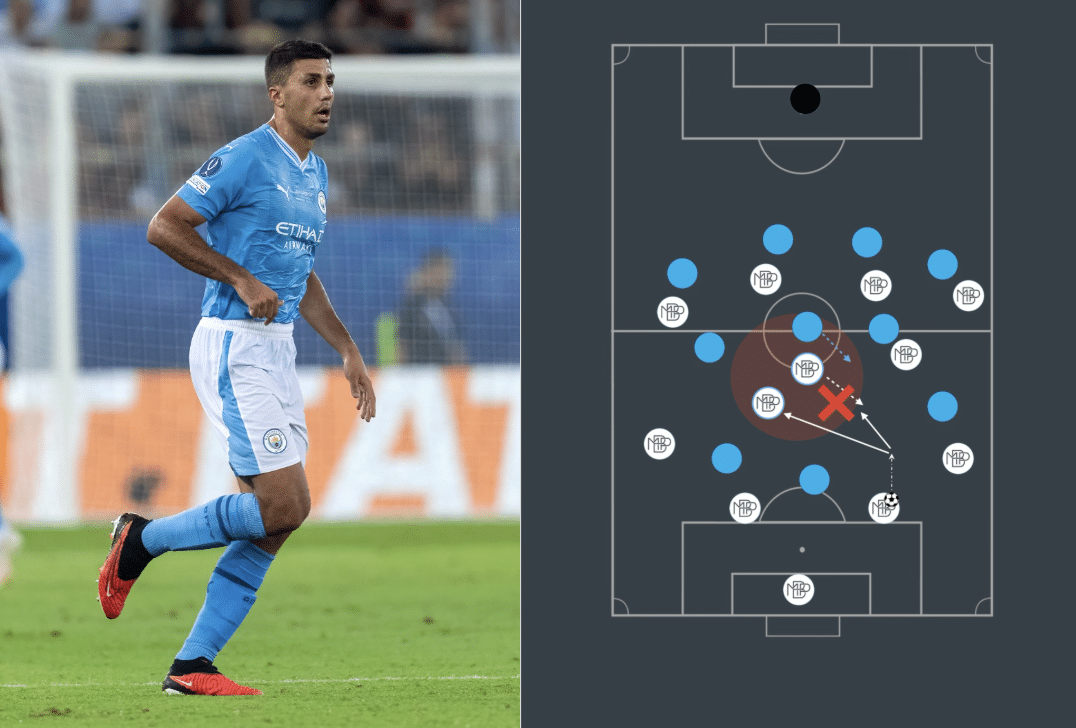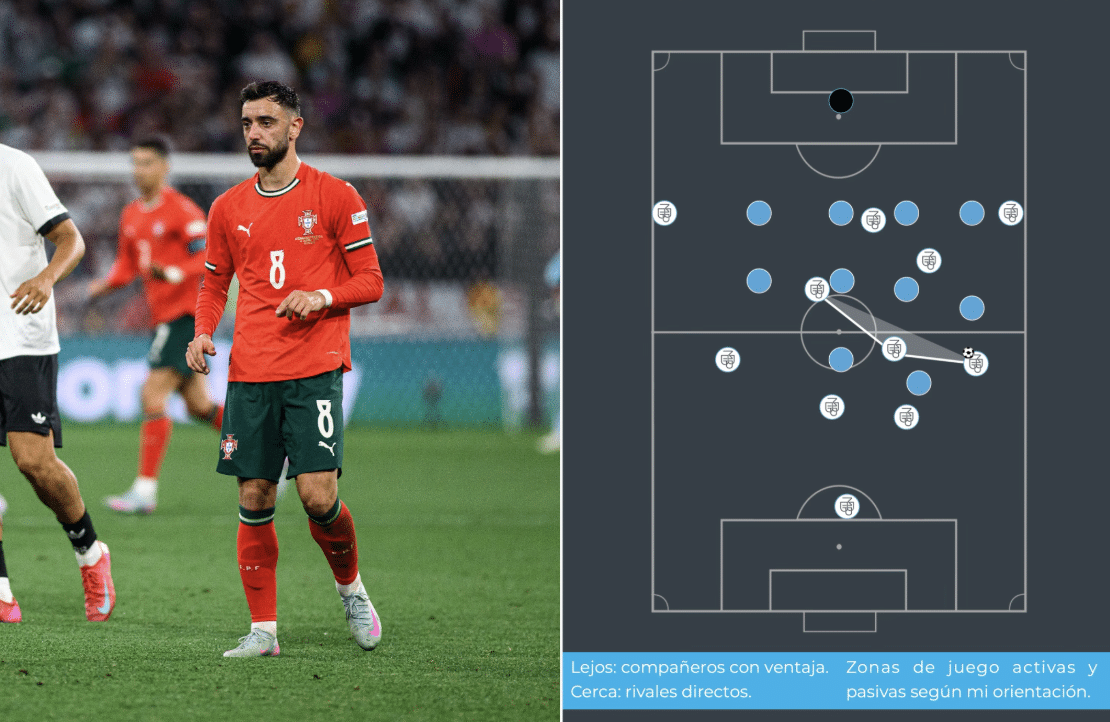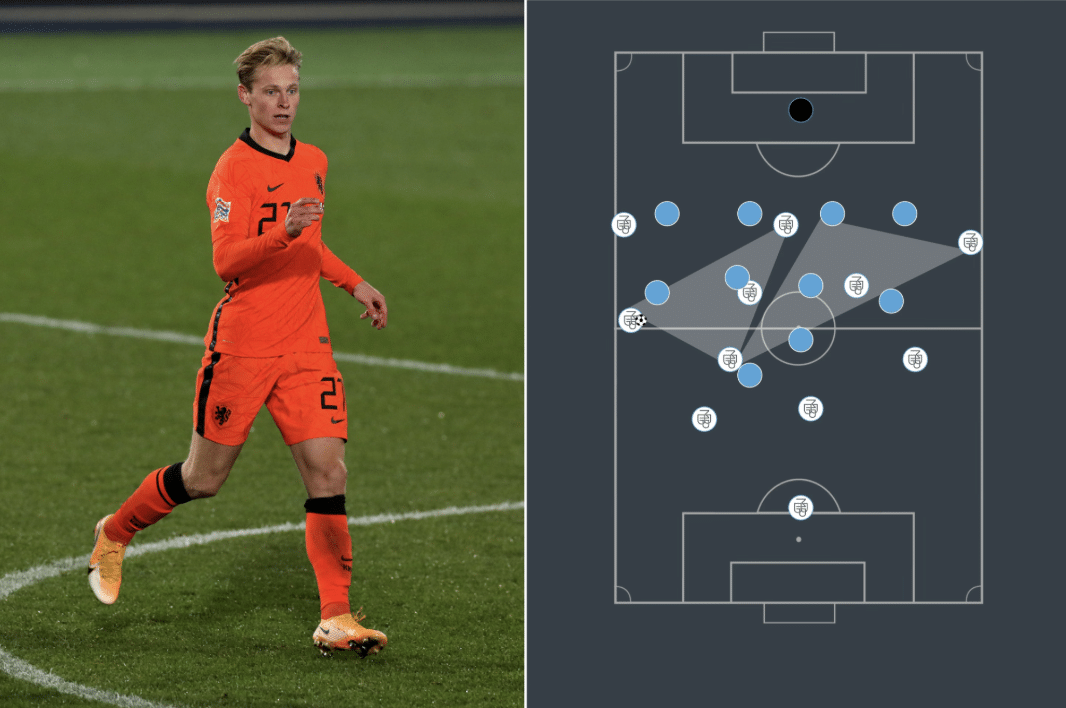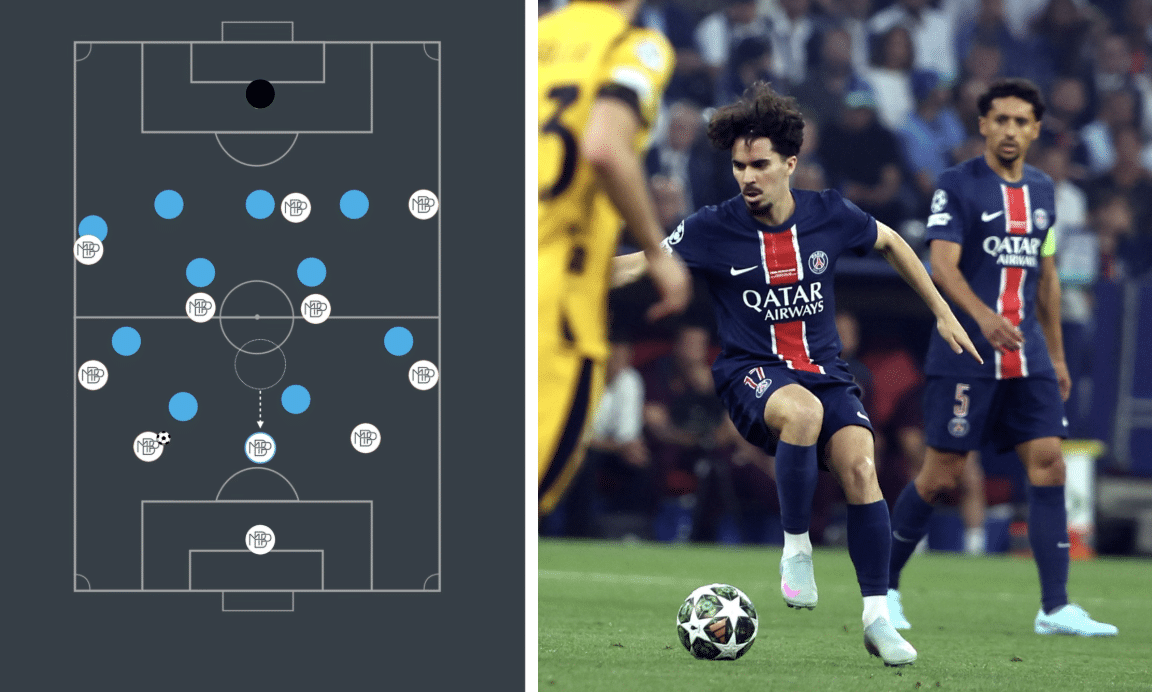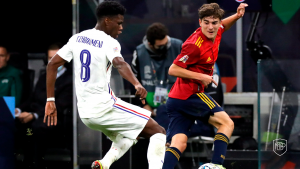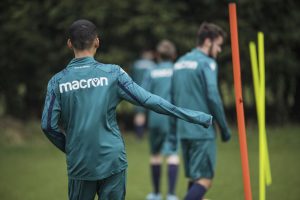At the MBP Coaches’ School, we believe that any creative midfielder must master at least three key individual fundamentals in order to have an impact and organise their team’s attacking play.
If you are a coach who favours ball possession and attacking play, you will need a creative midfielder in your team. If we look at some of the best midfielders in football today, we can see that many of them have mastered three fundamentals that we consider key to their play and profile. We describe them below:
1. Fundamental 1: Finding the interval space (intra and interlineal) to receive the pass
This fundamental occurs when one of our midfielders without the ball is positioned in an inside zone without individual marking and ready to receive the ball with the aim of advancing the play.
To do this, the player must constantly offer support to the on-ball teammate in the intervals (within the same line or between two lines or, ideally, both at the same time) in order to progress the play, being far enough away from all the defenders around them to be able to receive the ball with as much space and time as possible.
It is important to note that, in order to optimise the application of this fundamental, the player must orientate themselves to receive as much information as possible, scanning to see what is happening directly behind them.
Image 1. Graphical representation of the fundamental of finding the interval space (intra- or inter-line). Image of Rodri, in a match with Manchester City. Source: MBP Coaches’ School
2. Fundamental 2: Orientating the body to receive the máximum amount of information and Scanning to take information from other zones
In this case, these are two similar fundamentals that allow the player to find relevant information about the environment. This situation arises when the centre midfielder, without the ball, is in a position to receive it, especially if they are located in the central channel.
On the one hand, they must open up to receive as much information as possible. Their positioning should be diagonal in relation to the line in front and behind, facilitating the orientation of the body.
Image 2. Graphical representation of the fundamental of orientating the body correctly to receive as much information as possible. Image of Bruno Fernandes, in a match for Portugal.. Source: MBP Coaches’ School
As for the fundamental for scanning to take more information from other zones, this occurs when the central midfielder is without the ball and offers support with the intention of receiving a pass.
To do this, we will consider three different situations: when the pass comes from behind, the player should look at their direct opponents and nearby teammates, as they will have a lot of space behind them. When the pass comes from the side, the player should look at their direct opponents and teammates out wide. And finally, when passes come from in front, the central midfielder should look at their direct opponents and teammates in depth, in order to progress as the first option.
Image 3. Graphical representation of the fundamental of scanning to take more information from other zones. An image of Frankie De Jong in a match for the Netherlands. Source: MBP Coaches’ School
3. Fundamental 3: Incorporating into the defensive line to support in the build-up of the play
Although it will not always appear in all teams that have this type of player, this fundamental is clearly something that any midfielder who likes to participate in the team’s attacking play must master.
It can occur in two situations: I) when the defensive line is evenly matched against the opposition forwards (e.g., two centre backs against two strikers), or II) when the defenders are technically limited and have difficulty building the play.
In the first case, applying this fundamental serves to create numerical superiority when the opposition team matches us in numbers to prevent us from building-up. In contrast, the second case will be useful when we want to ensure a higher quality and safer start to the play, supporting the defenders or the goalkeeper.
The central midfielder’s position in the defensive line can be between the centre backs, performing the famous ‘Lavolpiana’, or between the centre back and full back, dropping to the side. In addition, we must react automatically when the ball enters the progression of play, returning to our initial position in front of the defensive line (unless their position at the back is required to balance the team).
Image 4. Graphical representation of the fundamental of incorporating into the defensive line to support in the build-up of the play. An image of Vitinha, the Portuguese central midfielder, applying the fundamental. Source: MBP Coaches’ School
With all this in mind, it is clear that not all teams will prioritise having creative midfielders, but if they do favour a passing game based on ball possession, having players with this profile will be key. In addition, we must take into account a series of behaviours that they must master or enhance, enabling the team to implement the associated principles of play.

